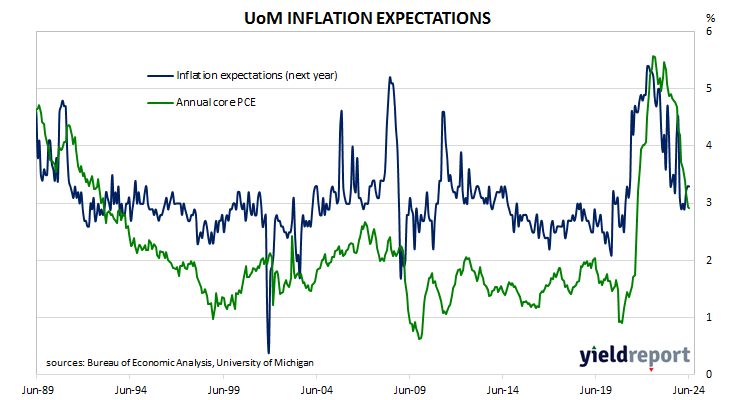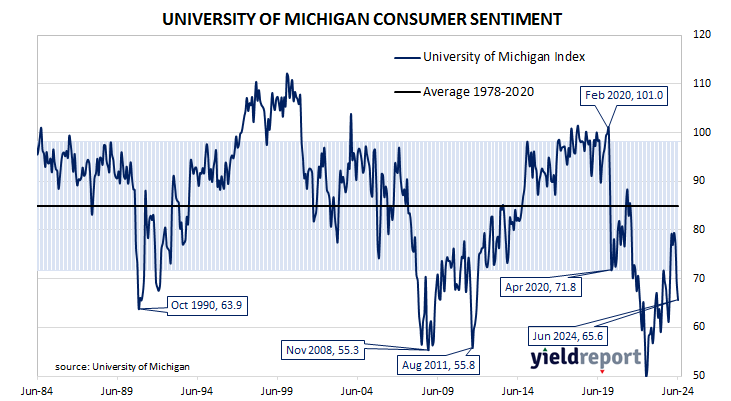Summary: University of Michigan consumer confidence index falls in July, reading slightly less than expected; views of present conditions, future conditions both deteriorate; nearly half of consumers still object to impact of high prices; US Treasury yields fall; rate-cut expectations firm; inflation expectations decline.
US consumer confidence started 2020 at an elevated level but, after a few months, surveys began to reflect a growing unease with the global spread of COVID-19 and its reach into the US. Household confidence plunged in April 2020 and then recovered in a haphazard fashion, generally fluctuating at below-average levels according to the University of Michigan. The University’s measure of confidence had recovered back to the long-term average by April 2021 but then it plunged again in the September quarter and remained at historically low levels through 2022 and 2023.
The latest survey conducted by the University indicates confidence among US households has deteriorated further in July. The preliminary reading of the Index of Consumer Sentiment registered 66.0, slightly less than the 67.0 which had been generally expected as well as June’s final figure of 68.2.
Consumers’ views of current conditions and their views of future conditions both deteriorated relative to those held at the time of the June survey.
“Although sentiment is more than 30% above the trough from June 2022, it remains stubbornly subdued,” said the University’s Surveys of Consumers Director Joanne Hsu. “Nearly half of consumers still object to the impact of high prices, even as they expect inflation to continue moderating in the years ahead.”
Short-term US Treasury bond yields fell noticeably while longer-term yields fell more modestly on the day. By the close of business, the 2-year Treasury yield had lost 7bps to 4.45% while 10-year and 30-year yields both finished 2bps lower at 4.19% and 4.40% respectively.
In terms of US Fed policy, expectations of a lower federal funds rate in the next 12 months firmed, with five 25bp cuts currently factored in. At the close of business, contracts implied the effective federal funds rate would average 5.315% in August, 2bps less than the current spot rate, 5.22% in September and 4.955% in November. June 2025 contracts implied 4.07%, 126bps less than the current rate.
US consumer inflation expectations continued to decline. Year-ahead expectations slowed from 3.0% to 2.9%, as did consumers’ long-term expectations.

It was once thought less-confident households are generally inclined to spend less and save more; some decline in household spending could be expected to follow. However, recent research suggests the correlation between household confidence and retail spending is quite weak.


